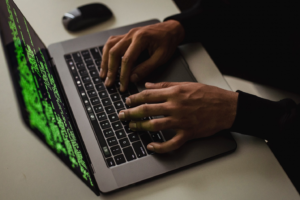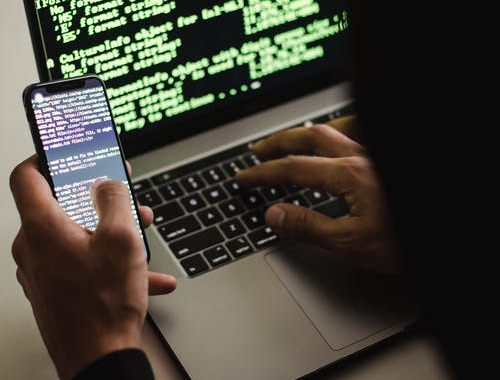In today’s digital landscape, data breaches have become an unsettling reality for businesses and individuals alike. The aftermath of a breach not only disrupts operations but also jeopardizes sensitive information, leading to potential financial and reputational damages. As a data forensic expert, our role extends beyond identifying breaches; it involves a meticulous forensic examination of breach incidents.
At Eclipse Forensics, we specialize in unraveling the complexities of breach investigations, employing techniques that reveal critical insights and aid in securing compromised systems. If you’re dealing with a breach incident, don’t hesitate to contact us for expert assistance.
Understanding the Breach Landscape
The initial response to a breach incident sets the tone for the entire investigation. Here’s a deeper dive into the essential steps taken by computer forensics consultants during the early stages of a breach:
1. Rapid Response and Assessment:
Upon detecting a breach or suspecting unauthorized access, immediate action is crucial. Computer forensics consultants are brought in to swiftly assess the situation. This involves creating a response team comprising experts in digital forensics, incident response, and cybersecurity.
2. Isolation and Preservation:
The foremost step is isolating affected systems to prevent further compromise while ensuring the preservation of evidence. This isolation involves disconnecting compromised devices or segments of the network from the rest of the infrastructure. Simultaneously, evidence preservation techniques, such as creating disk images and securing logs, are employed to maintain the integrity of potential evidence.
3. In-Depth Analysis:
With affected systems isolated and evidence secured, a meticulous analysis ensues. This phase involves a deep dive into system logs, network traffic, and any available artifacts. The goal is to identify the intrusion vector, understand how the breach occurred, and discern the extent of the compromise.
4. Uncovering Attack Vectors:
Identifying the attack vectors used by intruders is a primary objective. This can encompass a multitude of methods:
Malware Analysis: Detecting, analyzing, and understanding the behavior of malware involved in the breach.
Phishing and Social Engineering Assessment: Investigating potential phishing emails, social engineering tactics, or other human-centric attack vectors that might have granted unauthorized access.
Network Vulnerability Analysis: Examining vulnerable entry points within the network architecture that intruders exploited.
5. Forensic Tools and Techniques:
Utilizing specialized forensic tools and methodologies is vital. These tools aid in data extraction, analysis, and reconstruction of events. They encompass a range of techniques, including memory forensics, disk forensics, and network forensics, tailored to uncover evidence while preserving its integrity.
6. Timeline Reconstruction:
Building a comprehensive timeline of events is pivotal. This involves correlating data from various sources to create a detailed chronology of the breach. By understanding the sequence of actions taken by the intruders, forensic experts gain insights into the breach’s progression and the potential impact on the affected systems.
7. Reporting and Recommendations:
The findings from this forensic examination are documented in a detailed report. This report not only outlines the discovered vulnerabilities and breach details but also provides actionable recommendations to mitigate the identified risks and strengthen the organization’s security posture.
The Crucial Role of Forensic Examination
A key aspect of forensic examination in breach incidents is reconstructing the breach timeline. This involves meticulously piecing together the sequence of events leading up to and following the breach. By examining log files, system timestamps, and network activity, we aim to understand the extent of the compromise. This comprehensive timeline not only assists in understanding the breach’s scope but also serves as a crucial reference for mitigation strategies.
Identifying the Extent of Compromise
Mobile devices have become integral parts of our daily lives, serving as hubs for communication, data storage, and access to organizational networks. In the context of breach investigations, these devices often serve as crucial pieces in understanding the extent of compromise and identifying potential entry points exploited by attackers.
1. Mobile Devices as Entry Points:
In modern workplaces, mobile devices are interconnected with organizational networks, serving as access points for emails, files, and even sensitive corporate data. Unfortunately, this interconnectivity also makes them susceptible to being exploited by attackers seeking unauthorized access to the network.
Seeking expert and experienced computer forensics consultants? Get in touch with Eclipse Forensics now!
2. Investigative Significance:
During a breach investigation, forensic experts meticulously examine mobile devices for any signs of compromise or unauthorized access. This involves a comprehensive analysis of various elements:
Device Logs and Artifacts: Forensic specialists delve into device logs, examining timestamps, app usage history, call logs, and messaging records. These logs can provide crucial insights into any suspicious activities or unauthorized access.
Network Activity: Analyzing network logs and Wi-Fi connection history helps identify if the device has connected to potentially compromised networks or if there’s evidence of unusual data transmissions.
Installed Applications and Permissions: Reviewing installed applications and their permissions is vital. Suspicious or rogue applications might have been used as entry points for malicious activities.
Data Encryption and Storage: Examination of encrypted data and storage areas within the device can reveal any attempts at unauthorized data extraction or tampering.
3. Comprehensive Investigation:
Forensic examination of mobile devices is not limited to smartphones alone; it extends to tablets, laptops, wearables, and any other portable devices that might have had access to the organizational network. These investigations encompass various operating systems, including Android, iOS, and others, ensuring a thorough examination across diverse platforms.
4. Techniques and Tools:
Forensic experts utilize specialized tools and methodologies to extract data forensically from these devices while ensuring the integrity of evidence. They employ techniques such as physical extraction, logical acquisition, and file system analysis to uncover hidden or deleted data that might hold critical evidence regarding the breach.
5. Supporting the Breach Timeline:
Information extracted from mobile devices often contributes significantly to reconstructing the breach timeline. By correlating activities across multiple devices, including desktops, servers, and mobile devices, a more comprehensive timeline can be established, aiding in understanding the sequence of events leading up to the breach.

Seeking Professional Assistance
If your organization has encountered a breach, it’s imperative to act swiftly. Contact our team of computer forensics consultants at Eclipse Forensics for immediate assistance. Our experience in digital forensics, mobile device forensics, and forensic examination of breach incidents positions us to assist you in mitigating the impact and securing your systems.
Mitigating Future Risks
Mitigating future risks after a breach is a critical phase that demands an in-depth and comprehensive approach. It involves a series of steps aimed at not just resolving the current breach but also fortifying defenses to prevent similar incidents in the future.
1. Patching Vulnerabilities:
One of the immediate tasks post-breach is identifying and addressing vulnerabilities that allowed the breach to occur. This process involves a thorough analysis of software, systems, and networks to uncover weaknesses that were exploited. Patch management becomes crucial, requiring a structured approach to apply updates, fixes, and security patches across the affected infrastructure. It’s essential to prioritize critical vulnerabilities and apply patches promptly to prevent further exploitation.
2. Strengthening Security Measures:
Beyond patching known vulnerabilities, enhancing overall security measures is vital. This involves a holistic review of existing security protocols, access controls, and encryption methods. Strengthening authentication mechanisms, implementing robust encryption standards, and establishing stringent access controls are integral parts of this process. Additionally, instituting multi-factor authentication (MFA) and regular password updates can significantly bolster security posture.
3. Reviewing Incident Response Plans:
A breach highlights the importance of a well-defined incident response plan. Post-incident, it’s crucial to review and update these plans based on the insights gained from the forensic examination. Fine-tuning response protocols, outlining clear escalation procedures, and conducting simulation exercises to test the efficacy of these plans are essential. A proactive approach to incident response can significantly minimize the impact of future breaches.
4. Continuous Monitoring and Threat Detection:
Implementing continuous monitoring mechanisms is pivotal in identifying anomalies and potential threats. Advanced threat detection tools and techniques, including intrusion detection systems (IDS) and security information and event management (SIEM) solutions, can help in real-time monitoring. This enables the early detection of suspicious activities and enables swift responses to potential threats before they escalate into breaches.
5. Employee Training and Awareness:
Human error remains a prevalent factor in breaches. Educating employees about cybersecurity best practices, conducting regular training sessions, and fostering a culture of security awareness within the organization are critical. Employees should be vigilant about phishing attempts, social engineering tactics, and other common attack vectors to reduce the likelihood of successful breaches due to human error.
6. Regular Security Audits and Assessments:
Periodic security audits and assessments are vital to evaluate the effectiveness of implemented security measures. Conducting penetration testing, vulnerability assessments, and risk analysis helps identify gaps and proactively address potential vulnerabilities before attackers exploit them.
The Importance of Expert Guidance
In the aftermath of a breach, navigating the complexities of forensic examination requires specialized expertise. Our team of skilled professionals at Eclipse Forensics is equipped with the knowledge and tools necessary to conduct comprehensive investigations. As trusted data forensic experts, we provide invaluable insights that assist in not only understanding the breach but also in securing systems against future threats.
Securing Your Future
The aftermath of a data breach demands a meticulous approach to the forensic examination. Understanding the breach landscape, reconstructing timelines, identifying compromise extents, and mitigating risks form the core of breach incident investigations.
At Eclipse Forensics, our commitment as data forensic experts extends to providing comprehensive support to organizations dealing with breach incidents. If you require expert guidance in mitigating risks and securing your systems, contact us today.
Let us help you navigate through the intricacies of breach investigations and safeguard your organization’s future.



























